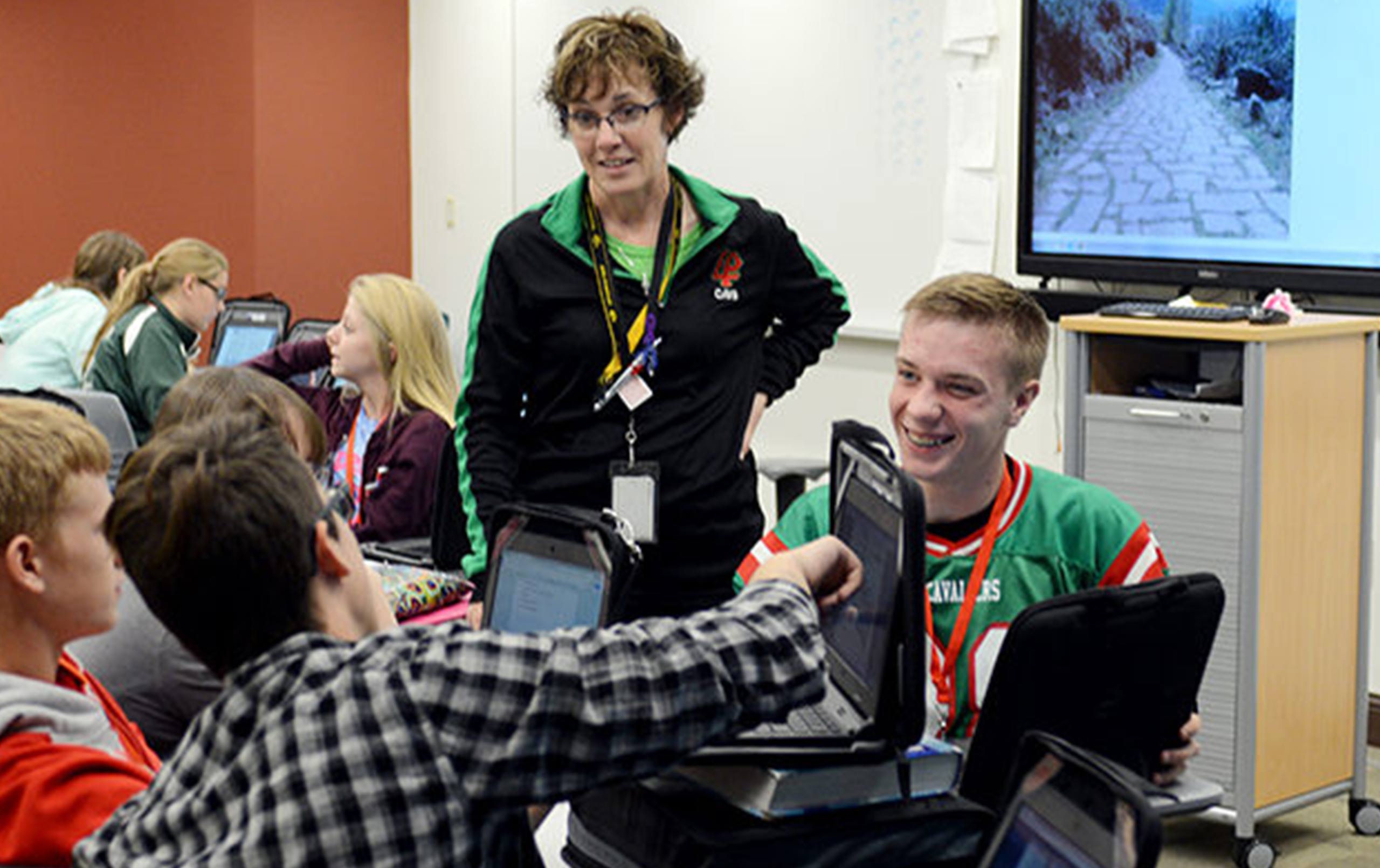
Students and educators agree: it’s time to upgrade the cramped, stuffy, and dated classrooms in their 90-year-old school.
“There’s no way I could work in this building,” said a LaSalle-Peru High School (LPHS) visitor at the start of this school year. “It’s way too hot.”
No air conditioning is just one of many signs of the school’s age. Classrooms, for instance, have changed little since the school was built over 90 years ago.
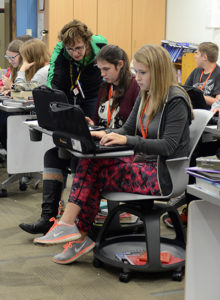
Steven Wrobleski, superintendent of LaSalle-Peru Township High School District 120, said, “Our 600-square-foot classrooms are far below the average of 900 square feet, plus the old desks and technology don’t support today’s teaching and learning styles.”
Like her LPHS colleagues, social science teacher Kristen Adams found her classroom undersized and ill-equipped. She would roll around a cart with an old projector and struggle to move unwieldy furniture. Also, because her room only had three outlets, power cords often meandered over the cracked and mismatched floor tiles. Then there’s the heat. “I’m lucky that my classroom was on the first floor and that I had windows that I could open to ventilate the room,” said Adams. “Teachers with inner classrooms cannot get a breeze to ventilate their space.”
Over the summer, the district worked with Legat Architects in partnership with Kmetz Architects to remodel one classroom before school started. It would be a 21st century “Model Classroom,” and Adams and her World History students would be the test subjects.
When those students entered the Model Classroom in August, they were greeted with a vibrant, spacious learning setting equipped with flexible furniture and the latest technology. Noise-reducing carpet tiles replaced the damaged tiles. Dimmable LED lighting replaced the harsh fluorescents. The room was air conditioned, and those pesky power cords were nowhere to be seen.
What the Students Said
How is the Model Classroom performing? The district turned directly to the 139 students who used it to find out. They rated it on a scale of 0 (much worse) to 100 (much better) compared to other LPHS classrooms. The Model Classroom received a final score of 93. A control classroom (a basic classroom) received a 51.
Adams said, “The kids love the classroom: it brings them comfort, flexibility, and independence. Most important, there is a higher level of engagement.”
“There’s no doubt about it,” said Wrobleski. “Classroom makeovers will help our teachers better equip all our students with the skills that they need to shine in college and in the workforce. It’s good for them, and it’s good for the community.”
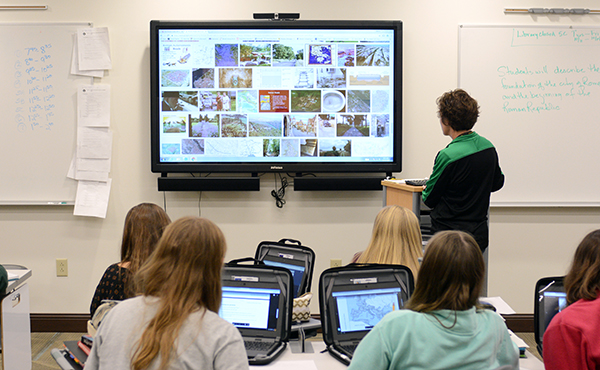
Movement Means Engagement
Kristen Adams likes to move students around her classroom to promote interaction and respond to their different learning preferences. She said, “I’m not a teacher who teaches in rows and never have been. It’s so much more effective to get around and talk to students.”
Unfortunately, breaking into groups in her old classroom required heaving around bulky furniture. It disrupted the educational process.
The Model Classroom tells a different story: every piece of furniture is on wheels. Adams said, “Moving in and out of groups is phenomenal. It’s quick, it’s easy, and it’s quiet. We get back on task right away.”
Additionally, before the remodel, Adams would never have attempted groups larger than four: the old furniture just didn’t let students get close enough. Now, she can have groups of up to eight.
During planning for the Model Classroom, students throughout the school gave input on carpet samples and ranked different kinds of chairs.
A favorite turned out to be the HOKKI stools, which allow students to rock and roll to their hearts’ content. The research bears it out: some students actually think better if they’re moving. “It’s okay to fidget,” said Adams.
Students also often ask Adams if they can use the beanbags for independent study or for a projects with a partner. Her response: “Whatever you need to go and get the job done.”
Adams has noticed that the room’s variety of seating options help keep her students more focused than the old classroom did.
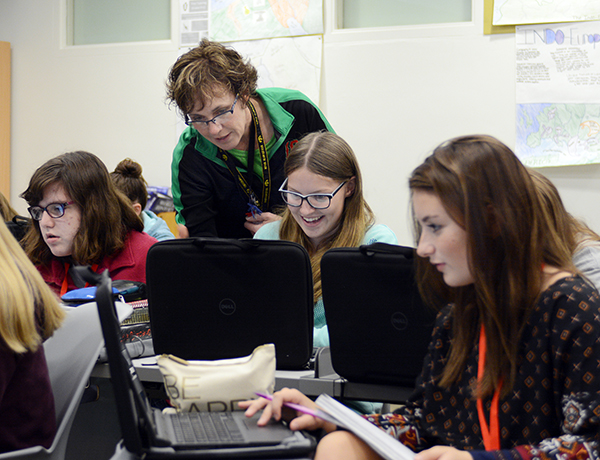
A 12,000-hour Commitment
Jill Urban-Bollis, who teaches Clinical Experience in Education and Educational Psychology at Illinois Valley Community College, typically wouldn’t think of telling her “Ecology of the Classroom” students about LPHS classrooms . . . unless it’s to show them what a classroom shouldn’t do.
She also happens to be an LPHS alumnus. She said, “The LPHS classrooms haven’t changed much since I graduated there 30 years ago.”
Then Urban-Bollis, who now has two children at LPHS and one who will be soon, found out about the Model Classroom. She changed her mind.
She regularly cites LPHS’s updated classroom as a strong example of a technology-rich space that promotes active learning and that allows quick transition from traditional lecture space to small group setting to individual study space.
She said, “As soon as you walk into the Model Classroom, the soft colors and lighting, along with the furniture and organization, create a comfortable feeling. It’s a coffee shop-like setting that gives students independence and choice, while better engaging them in the subject matter.”
Urban-Bollis also stated that the room’s cooler temperature helps boost concentration levels.
“Over the last couple decades, the way that teachers teach and students learn has totally changed,” said Urban-Bollis. “Unfortunately, K-12 classrooms in many schools, including LPHS, have lagged behind.”
According to Urban-Bollis, children spend about 12,000 hours in the classroom throughout their lives. She argues that districts and their communities should devote more energy into making those settings responsive to the different ways that students learn.
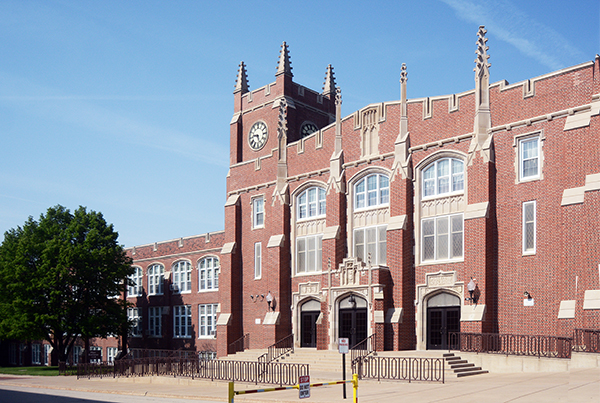
A Welcoming 21st Century Castle
LaSalle-Peru High School’s Gothic clock tower, Matthiessen Memorial Auditorium, and Howard Fellows Stadium hold a special place in the hearts of many community members. However, the campus has not had major renovations for over 50 years.
“For nearly a century, the LPHS community has prided itself on educating all students to the highest standards in a safe and challenging environment,” said Wrobleski.
The Model Classroom has helped LPHS achieve a united vision: community members will approach an iconic, castle-like building on the outside. Inside, however, they will discover advanced learning settings and, most important, students prepared to meet tomorrow’s challenges.


